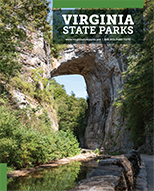Read Our Blogs
The Birth of a Park: It started in a Corn Field
The history of our Park of the Month for October Bear Creek Lake is a simple one: some guys scraped a hole from out of a Cumberland County corn field and then they plugged a gap in a rock outcropping and waited for rain.
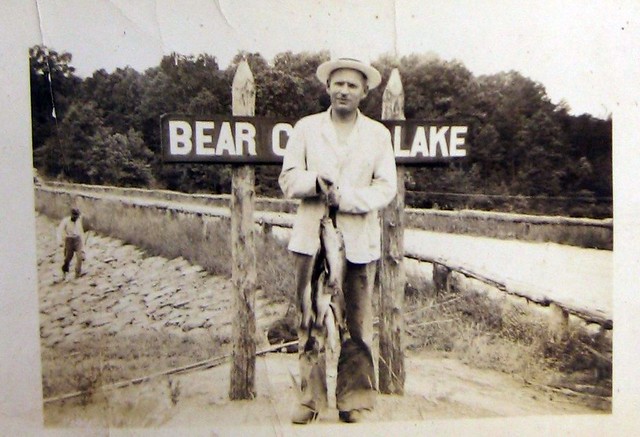 It all started with a lake where locals came to fish and boat
It all started with a lake where locals came to fish and boat
The history of Bear Creek Lake State Park is even simpler: after twenty years of fishing, boating and picnicking, some guys built a few campfire pits out of concrete blocks and cleared spaces for tents and opened the spaces to everybody as overnight facilities at a new state park. What’s missing in that history though is the fact that the park represents a consciousness of our nation, implemented at the highest levels of government, to reclaim abused land and restore vigor to the environment and to the health of all who breathe and find blessings in nature.
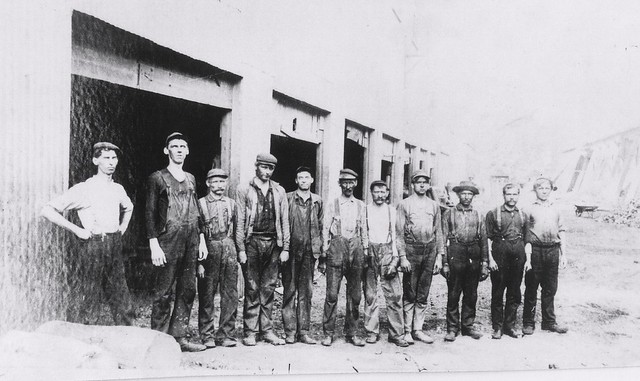 Work crews like the one pictured in 1938 built Bear Creek’s stone and wooden structures, as well as the lake
Work crews like the one pictured in 1938 built Bear Creek’s stone and wooden structures, as well as the lake
The “founding” of the park should more precisely address the inception of the Virginia State Forest system. What is now known as Bear Creek Lake State Park was originally the public recreation area of the nascent Cumberland State Forest. The real estate properties that would come to comprise this State Forest were originally purchased by the United States Government under the authorization of Title III Bankhead-Jones Farm Tenant Act, project LU-VA-3. This land acquisition was part of the Federal Land Use Program initiated in the 1930s by the Roosevelt Administration. The intent was to improve sub marginal land that had been abused by poor farming practices and timbering and which had also led to increased erosion of sediment into waterways. Through efforts of the Civilian Conservation Corps, the Works Progress Administration, and local workers, Bear Creek’s stone and wooden structures, as well as the lake itself, were constructed by the use of hand tools and mules. Most of the C.C.C. work done in the area was of forest reclamation. Access roads and fire towers were built to protect this reborn forest. Works Progress Administration and other workers came from as far as West Virginia and North Carolina to join the many local workers glad of a paycheck in those difficult economic times. One oral history was collected by a former chief ranger of the park and is remembered as follows:
“The winter of 1936 got so cold that the blacktop on US Route 60 froze and buckled into a bone-shaking jumble. Donald G. Black was hired under the U.S. Department of Agriculture to timber out the poor wood on land that would eventually become the Bear Creek Lake Recreational Area. Tools provided by the Department consisted of cross-cut saws, bow saws and axes. He provided his own boots at a dollar per pair, and gloves could be had for a cost of 25 cents per pair.”
“Sel Newman was foreman of the timber operation, and Walter Foreigner ran the HQ and first-aid station, which is now the HQ for the Cumberland State Forest today. Donald Black told me that the pay was pretty good at a dollar per day, and soon his brother Troy Black came up from their hometown of Winston-Salem NC to join the operation. Troy was hired as a driver of a CCC truck. The tolls of logging soon wore the truck out.”
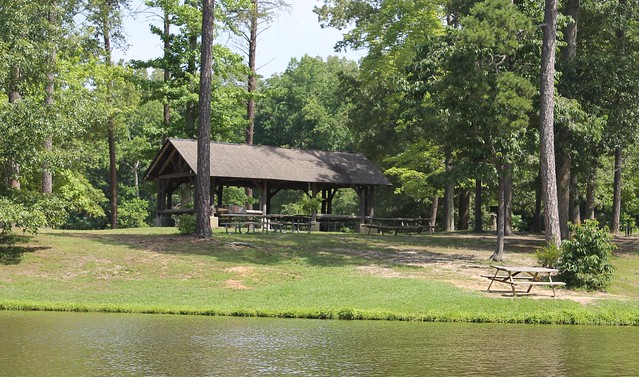 This shelter located on the shore of Bear Creek Lake was built by the Civilian Conservation Corps
This shelter located on the shore of Bear Creek Lake was built by the Civilian Conservation Corps
Bear Creek Lake opened to the public in June, 1940, under the jurisdiction of the Virginia State Forest Service. In 1959, the property was transferred to the Conservation Commission and in1962, Bear Creek Lake State Park was opened to the public, complete with camping facilities, under the jurisdiction of the Division of State Parks.
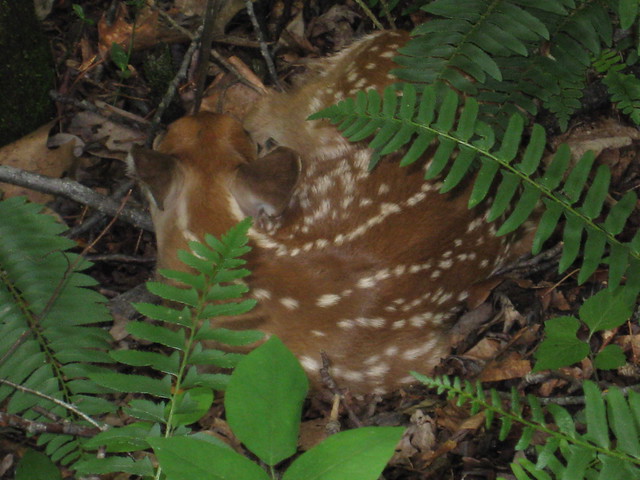 The park is home to a variety of native animals like this white tail fawn
The park is home to a variety of native animals like this white tail fawn
While the surrounding Cumberland State Forest has been an actively managed forest, the trees of the park have been allowed to follow their natural timelines. Since much of this forest owes its existence to reforestation projects from the 1930s, it is now many years old and has become a home to many animals that require such an environment of older mixed hardwoods and pines, such as the pileated woodpecker. Because of its unique relationship with the State Forest, the park benefits greatly from the improved habitat that 16,000 acres provides for all types of native animals Black bears, beavers, white tailed deer and wild turkeys would be only a footnote to our history if they didn’t have the forest to come home to. It changes every year and there are always new plants and critters coming on as the forest grows. Stuff that’s been missing for a hundred years. You can see new and wonderful flora! It’s like “Little Shop of Horrors”, without the horror of singing carnivorous plants.
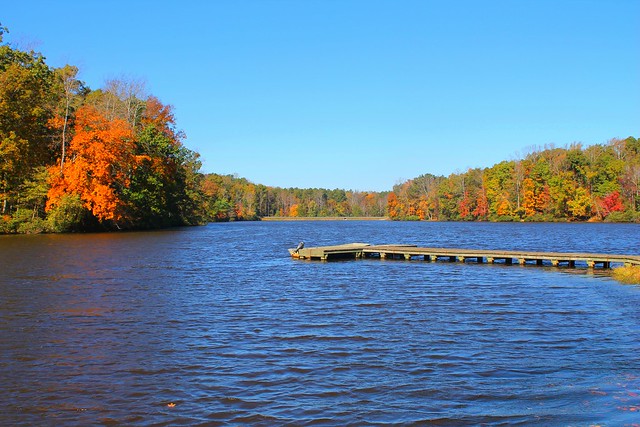 Bear Creek Lake as it appears today
Bear Creek Lake as it appears today
There are a variety of opinions about public land use, and how peoples’ values can so powerfully affect our environment. Hopefully we’ll always have some public lands to conserve. We can define “Conservation” narrowly, as a specific management process of the earth’s resources, but we can also use it as a convenient term that includes “Preservation”, “Restoration”, and “Renovation”. Terms that can apply not only to our relationship with nature, but with our own psyches. Through conservation, we can not only preserve the past in order to enhance the present and provide for the future, but can experience the renewed growth of our archaic environments. In balance with them comes the growth of our own public and personal potential.
Over time, the park has matured into what the original vision was: a place where a person can feel comfortable and secure while enjoying an array of amenities and outdoor recreation opportunities. A place to learn new skills, and a place to share the legacy of some guy with a shovel. Our history is now.
If you have read the article and have a question, please email nancy.heltman@dcr.virginia.gov.






